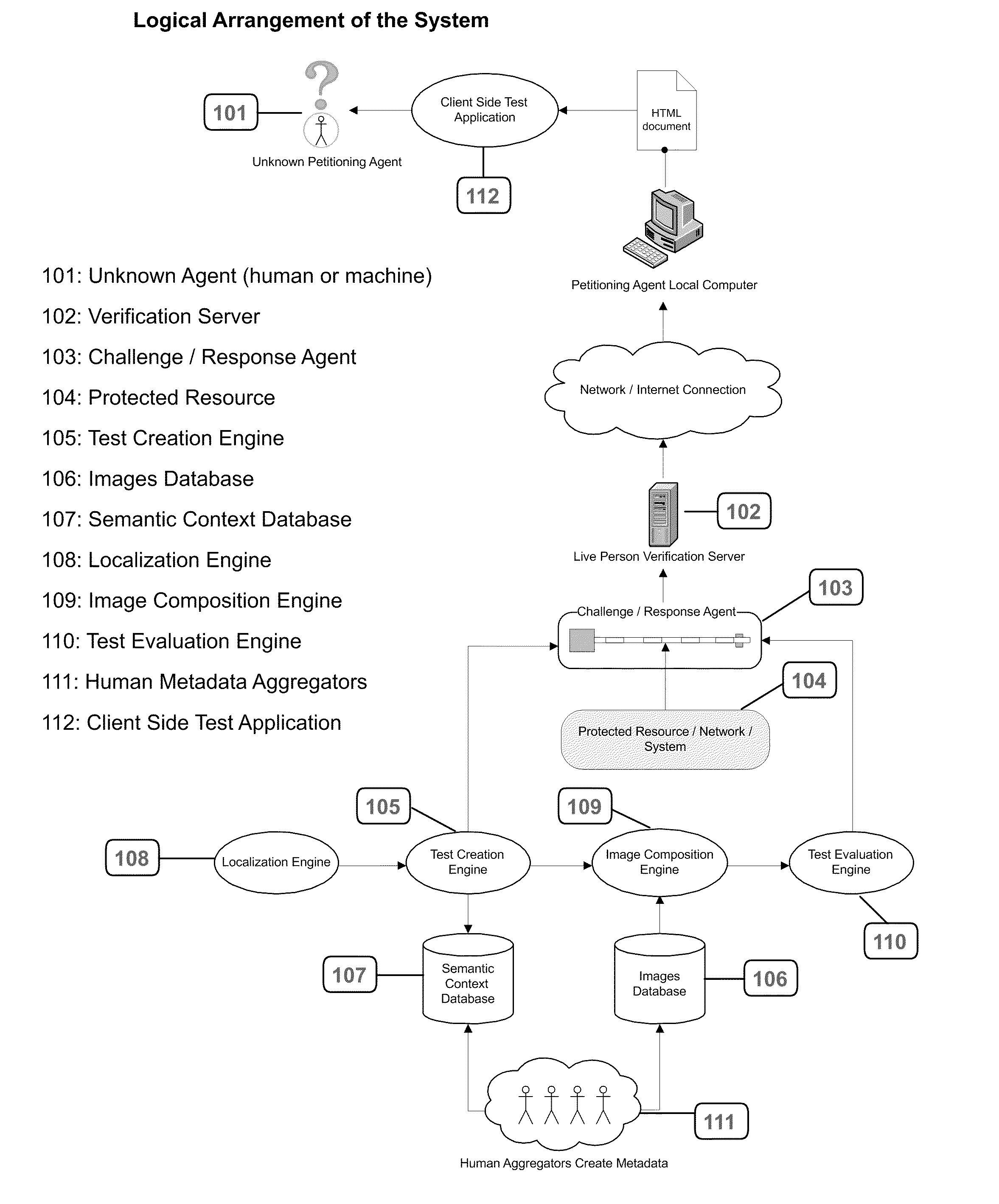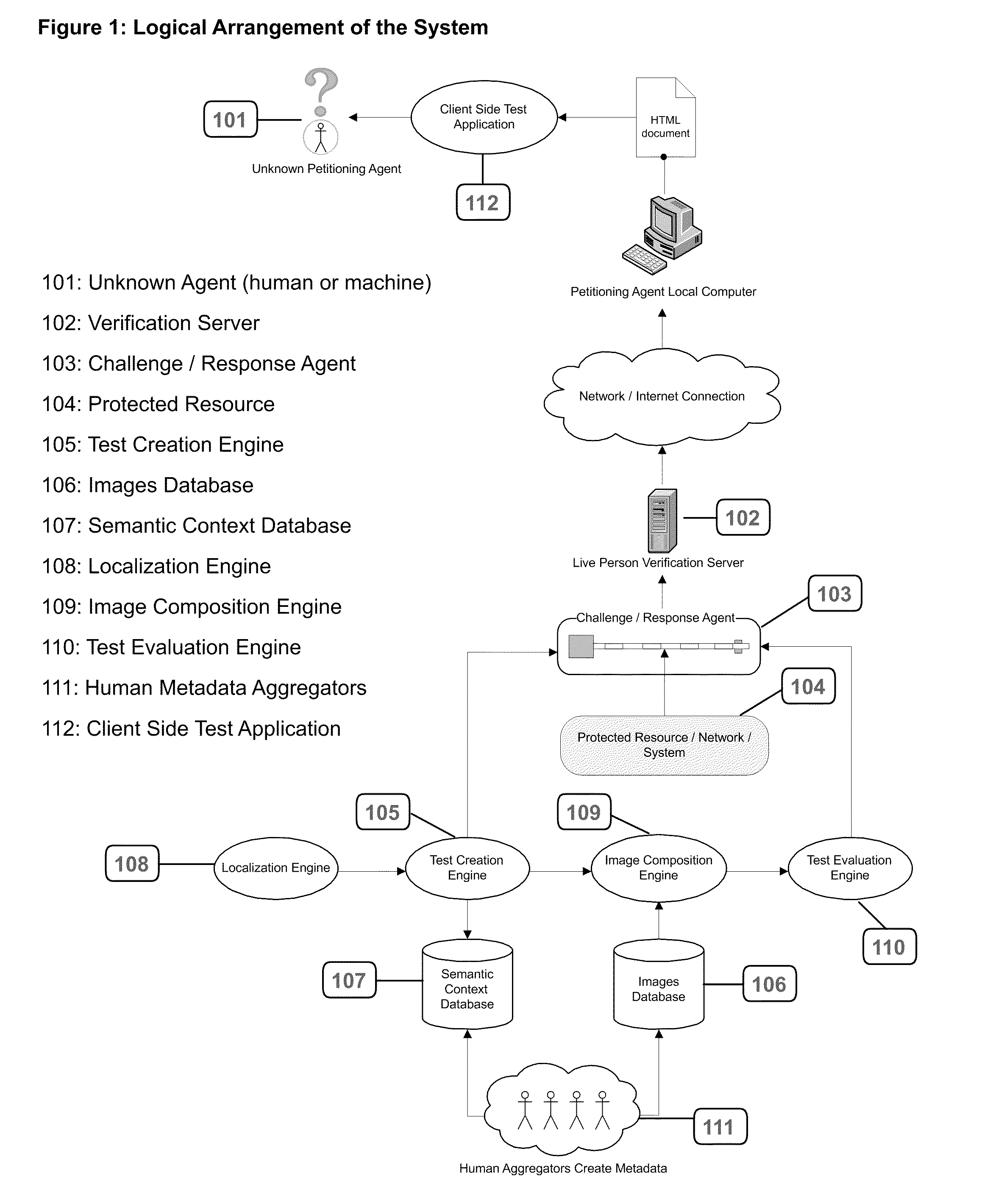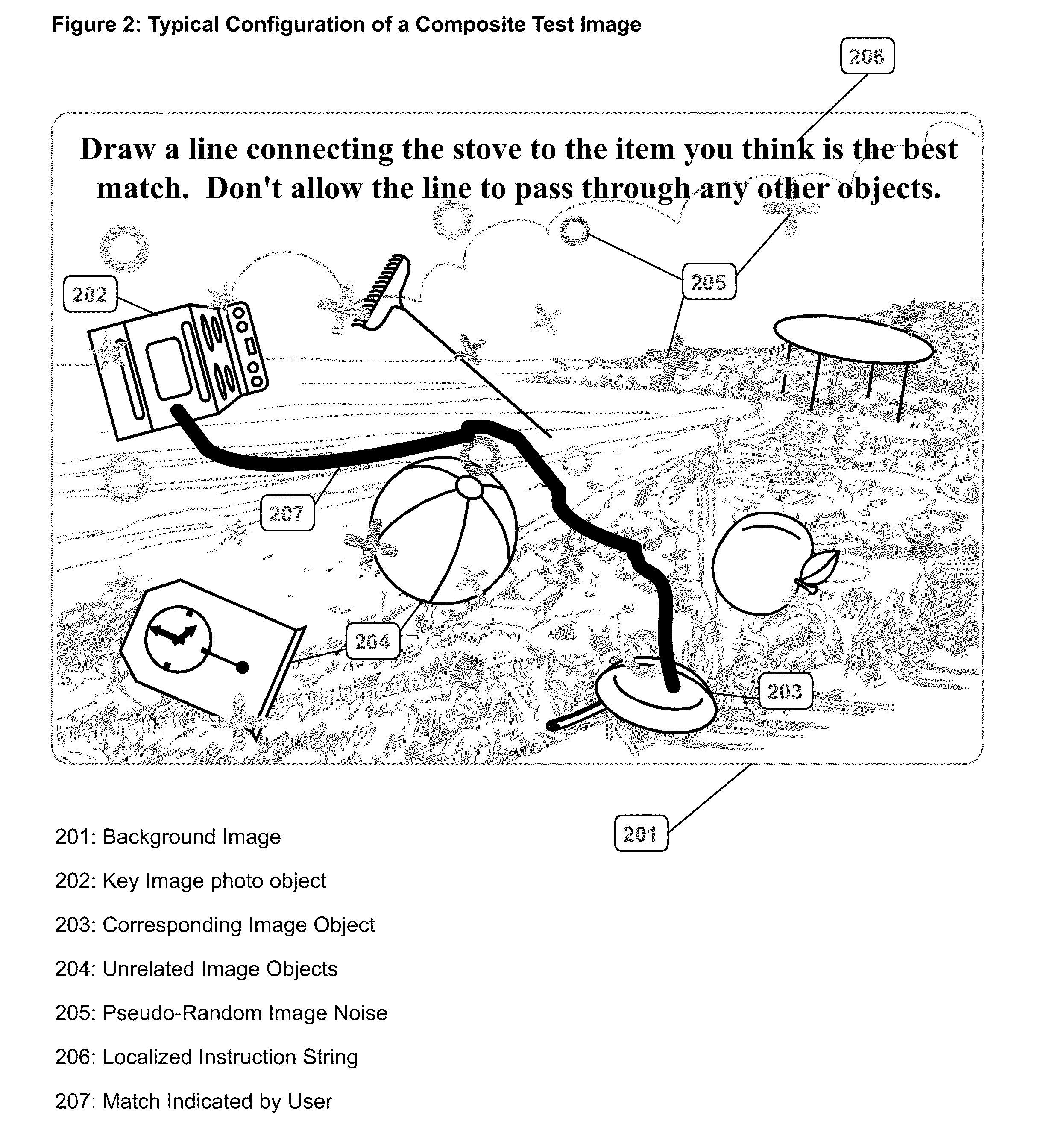System and Method for Restricting Access to a Computer System to Live Persons by Means of Semantic Association of Images
a technology of semantic association and access control, applied in the field of system and method for restricting access to a computer system to live persons by means of semantic association, can solve the problems of limited damage, unfavorable execution, and increasing problems of unscrupulous marketers in social networking applications on the internet. achieve the effect of preventing execution
- Summary
- Abstract
- Description
- Claims
- Application Information
AI Technical Summary
Benefits of technology
Problems solved by technology
Method used
Image
Examples
Embodiment Construction
[0060]The invention is a system and method for restricting assess to a computer system, resource, or network to live persons, and by extension for preventing the execution of automated scripts via an interface intended for human interaction.
[0061]In other words, it's a system to prevent spammers and malicious coders from exploiting web forms or information request pages that are intended for use by humans.
[0062]As shown in FIG. 1, a Semantic Context Database [107] is created for an arbitrary collection of photo objects, (images in which a single object has been isolated against a transparent background), which are stored in an Images Database [106]. Each entry in the Semantic Context Database must be created and aggregated by human operators [111]. Each image is identified with a unique ID, and associated with metadata that describes the image qualitatively, functionally, and emotively.
[0063]When a request is made by an unknown agent [101] to access a protected resource [104], the C...
PUM
 Login to View More
Login to View More Abstract
Description
Claims
Application Information
 Login to View More
Login to View More - R&D
- Intellectual Property
- Life Sciences
- Materials
- Tech Scout
- Unparalleled Data Quality
- Higher Quality Content
- 60% Fewer Hallucinations
Browse by: Latest US Patents, China's latest patents, Technical Efficacy Thesaurus, Application Domain, Technology Topic, Popular Technical Reports.
© 2025 PatSnap. All rights reserved.Legal|Privacy policy|Modern Slavery Act Transparency Statement|Sitemap|About US| Contact US: help@patsnap.com



